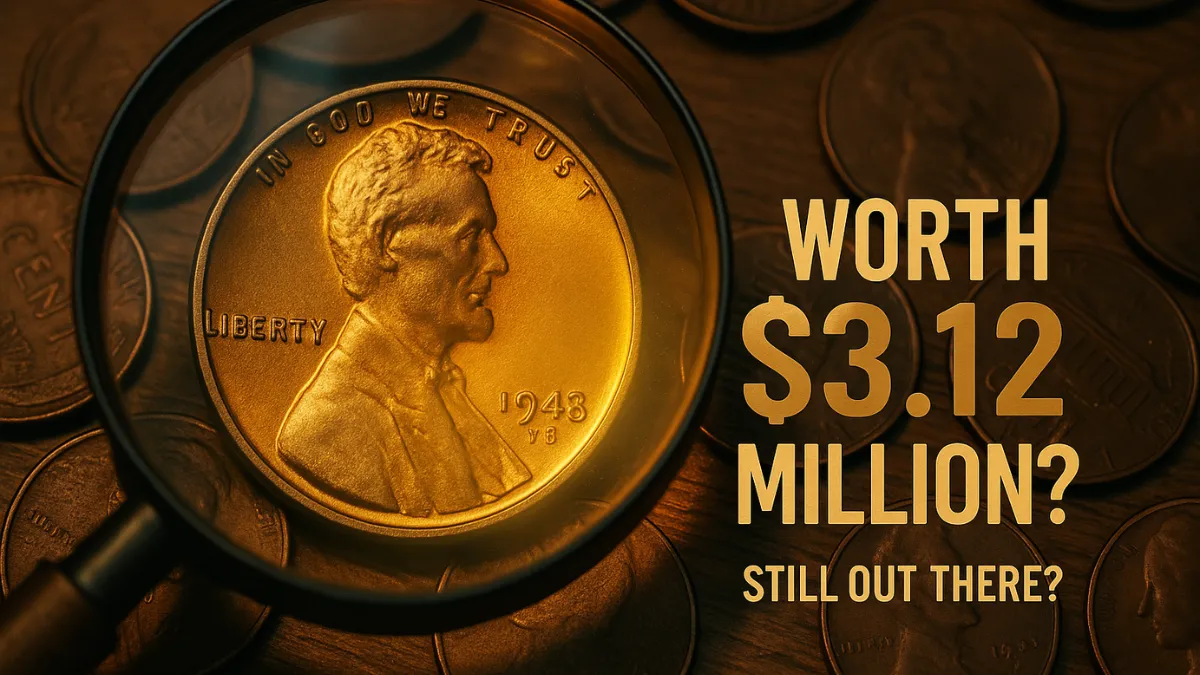Rare Lincoln Wheat Penny Worth: Imagine reaching into your pocket for change and pulling out a penny worth more than $3 million. It sounds like a dream, but for collectors and enthusiasts, this is a startling possibility. One specific Lincoln Wheat penny, minted in 1943, has gained legendary status among numismatists due to its extreme rarity and staggering value. Many believe this coin could still be unknowingly circulating among everyday pocket change, grocery store cash registers, or tucked away in old jars of loose coins.
The Story Behind the 1943 Bronze Lincoln Penny
During World War II, copper was a critical resource for military supplies like ammunition and shell casings. To conserve copper, the U.S. Mint produced pennies from zinc-coated steel in 1943. However, a few pennies were mistakenly struck on leftover bronze planchets from 1942. These errors created the famous 1943 bronze Lincoln pennies. It is estimated that only a handful of these coins exist today, making them one of the rarest and most valuable coins in American history.
Why This Penny Is Worth $3.12 Million
In 2010, one of these bronze 1943 pennies sold for an astonishing $1.7 million at auction. Over the years, their value has continued to climb, with collectors willing to pay record-breaking sums for the chance to own this historic artifact. In recent years, experts have valued the rarest specimens at over $3 million due to their scarcity and the fascination surrounding their accidental creation.
Could You Have One Without Knowing?
The possibility that a 1943 bronze penny is still in circulation fuels excitement for treasure hunters and casual collectors alike. Because pennies are often overlooked and undervalued, it’s entirely possible that one of these rare coins sits unnoticed in a coin jar, a cash drawer, or even in a child’s piggy bank. Checking for the telltale signs of a bronze 1943 penny—such as its coppery color and magnetic properties (it shouldn’t stick to a magnet)—could change someone’s life overnight.
How to Identify a 1943 Bronze Lincoln Penny
To identify this rare coin, start by checking the date. A 1943 penny with a copper tone instead of the silver-gray appearance of the steel pennies may be a candidate. The coin should weigh about 3.11 grams, unlike the lighter steel version. However, with forgeries and altered coins in existence, it’s essential to have any suspected 1943 bronze penny authenticated by a professional coin grading service before celebrating your newfound fortune.
The Enduring Fascination With Rare Coins
Stories like that of the 1943 bronze Lincoln penny highlight the enduring allure of coin collecting. Beyond their monetary value, rare coins offer glimpses into history, human error, and the quirks of minting processes. They remind us that extraordinary treasures can be hiding in the most ordinary places, waiting to be discovered by an unsuspecting person.
FAQs
What makes the 1943 bro nze Lincoln penny so rare?
This penny is rare because it was accidentally struck on bronze planchets left over from the previous year, rather than the intended steel planchets used during 1943. Only a few examples are known to exist.
How can I check if my 1943 penny is the rare bronze version?
Examine the color; the bronze penny will look coppery, not silver-gray like the steel version. Weighing the coin and testing it with a magnet (bronze pennies aren’t magnetic) can also help.
How many 1943 bronze Lincoln pennies are there?
Experts believe there are about 10 to 20 authentic examples, though the exact number is unknown because new ones occasionally surface.
Can I sell a 1943 bronze penny if I find one?
Yes. If you believe you have one, get it authenticated by a reputable coin grading service. Once verified, it could sell at auction for millions of dollars.
Where should I take my penny for authentication?
Reputable organizations like PCGS (Professional Coin Grading Service) or NGC (Numismatic Guaranty Corporation) can provide authentication and grading for rare coins.




